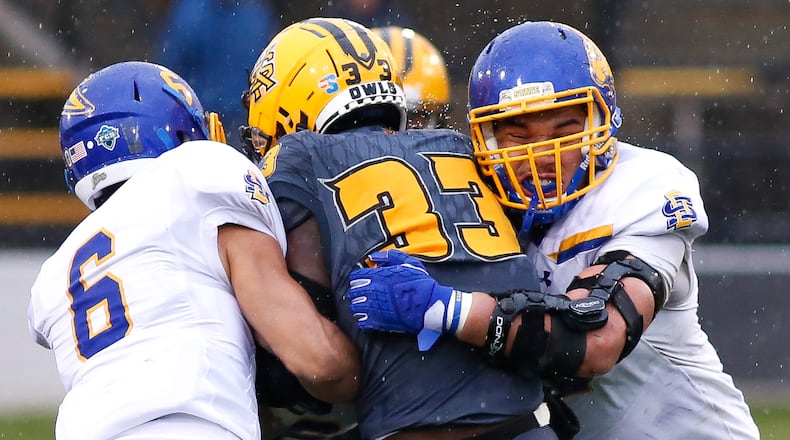Griffin Pizzano was in eighth grade when he realized he probably didn’t have what it takes to become a major college football recruit.
But he — like most high school football players — didn’t want his playing career to end. So without seeing stars beside his recruiting status, he began looking for other ways to pursue somewhat smaller dreams.
In fact, a 2019 study by Georgia High School Football Historians Association researcher Steve Slay reported that more than 4,400 former Georgia high school players made college football rosters that year, and Recruit Georgia’s David Ewald estimates the Peach State has been sending an average of 220 kids into the FBS programs for several years now.
While having football ability is important, other factors, including academics, came into play for Pizzano. Reporters and coaches were not blowing up his phone, so getting his name out there became a full-time job. In some cases, the end goal wasn’t even a scholarship.
It’s the same story for a lot of high school players, who use their football ability to increase their chances to be accepted into a desired school.
“When I was going through the recruiting process, I heard about the chances going from 8% to 50% at one school,” said Pizzano, a senior and computer science major at Middlebury (Vt.) College who played offensive line at Sequoyah High.
Middlebury, a Division III school competing in the New England Small College Athletic Conference, does not offer scholarships, but Pizzano said there was strong competition for the available spots. Scholarships at smaller schools are becoming even more scarce for high school graduates because more established transfers are filling the slots.
“I had a Group of Five (conference) coach tell me they’re taking 10 kids (on scholarship) this year, and seven are going to be transfers,” said Andrew Caraway, who is director of college recruiting at Callaway High in Hogansville. “So the kids I have who are borderline at that level are now competing for a scholarship with someone coming from a larger school, who used to be a 5-star, and the community knows his name.”
Smaller schools have limited resources and time to devote toward recruiting, so players must make quick, notable first impressions to break through. Pizzano said he put his GPA and test scores in the subject heading of emails to prospective colleges.
“That’s the first thing they’ll check,” Pizzano said. “Grades, GPA, test scores — if you don’t have those, you don’t get a second call because they can’t get you in.”
Caraway advises recruits at his school on how to market themselves on social media.
“You have to find a way to stand out and be easy to find,” Caraway said. “You have to tag the right people. When you visit somewhere, put it out there. Let people know you’re seeing schools. Post a highlight clip that catches someone’s eye. You have to sell yourself.”
Winning also helps recruits stand out. Buford coach Bryant Appling said deep playoff runs through the years have brought his players difference-making exposure.
Credit: Daniel Varnado
Credit: Daniel Varnado
“We always put a couple more kids in college because we had a chance to play three or four more games than everybody else,” Appling said. “We always get a kid looked at and offered late because during the season (college coaches on the recruiting trail) are running around to (high school) practices, and there are not many teams practicing.”
Recruit Georgia is a service for colleges that connects them with recruits. Ewald said that perhaps the biggest pitfall for a player is the wrong attitude.
“They just want to be recruited by the bigger schools, and they don’t stay open to the idea of playing at a smaller school,” Ewald said. “The biggest challenge is helping them realize there’s nothing wrong with D-II, D-III and NAIA schools. There’s very good football at every level. The rosters are made up of all-region players, and they’re a lot better than you think.”
“When (players) get a reality check, the recruiting process becomes easier,” Pace Academy coach Chris Slade said. “It’s when they’re unrealistic about where a kid should play, that’s when the problems come in. Nine times out of 10, you can trace that back to the parents.”
About the Author
The Latest
Featured

